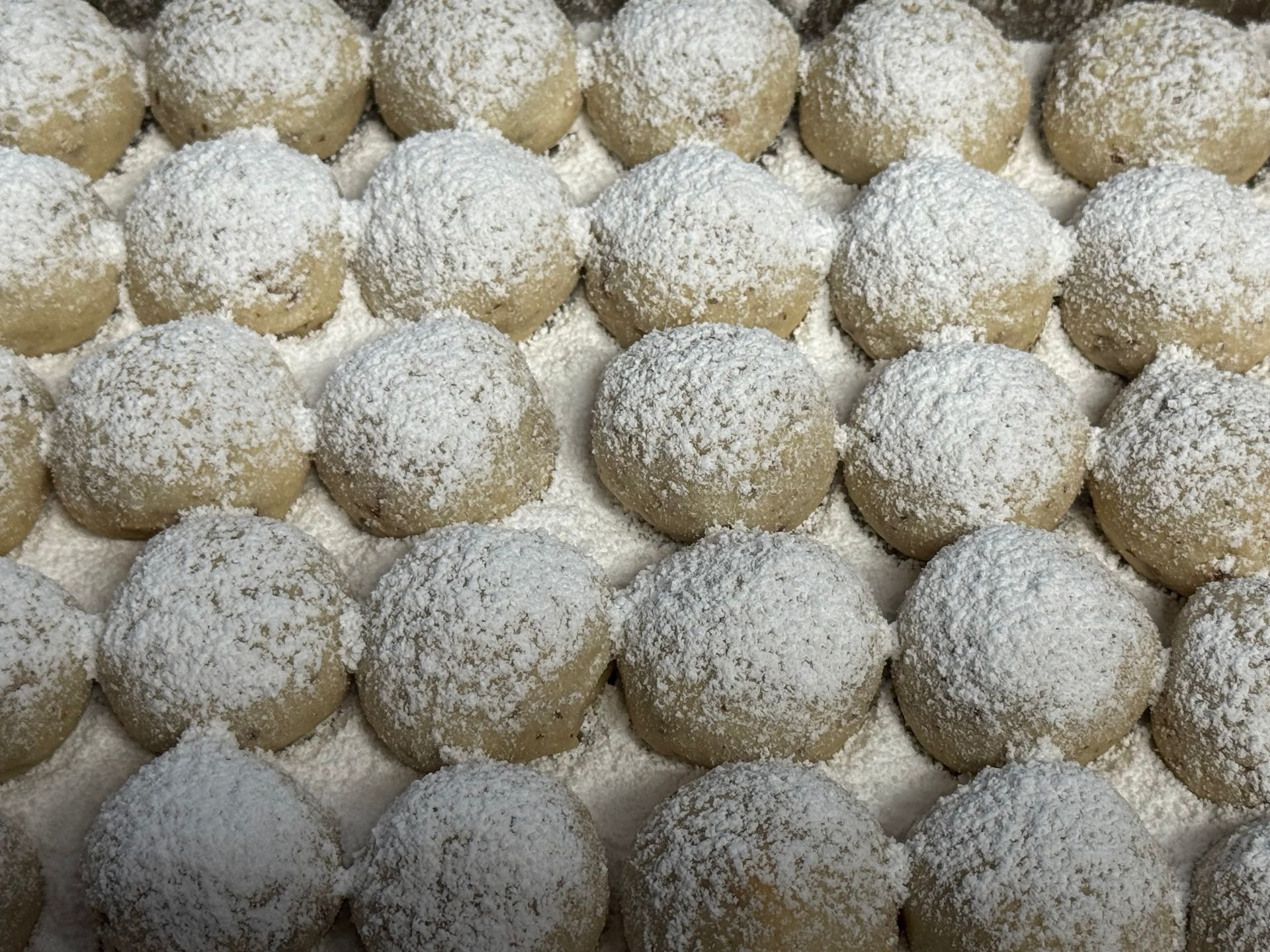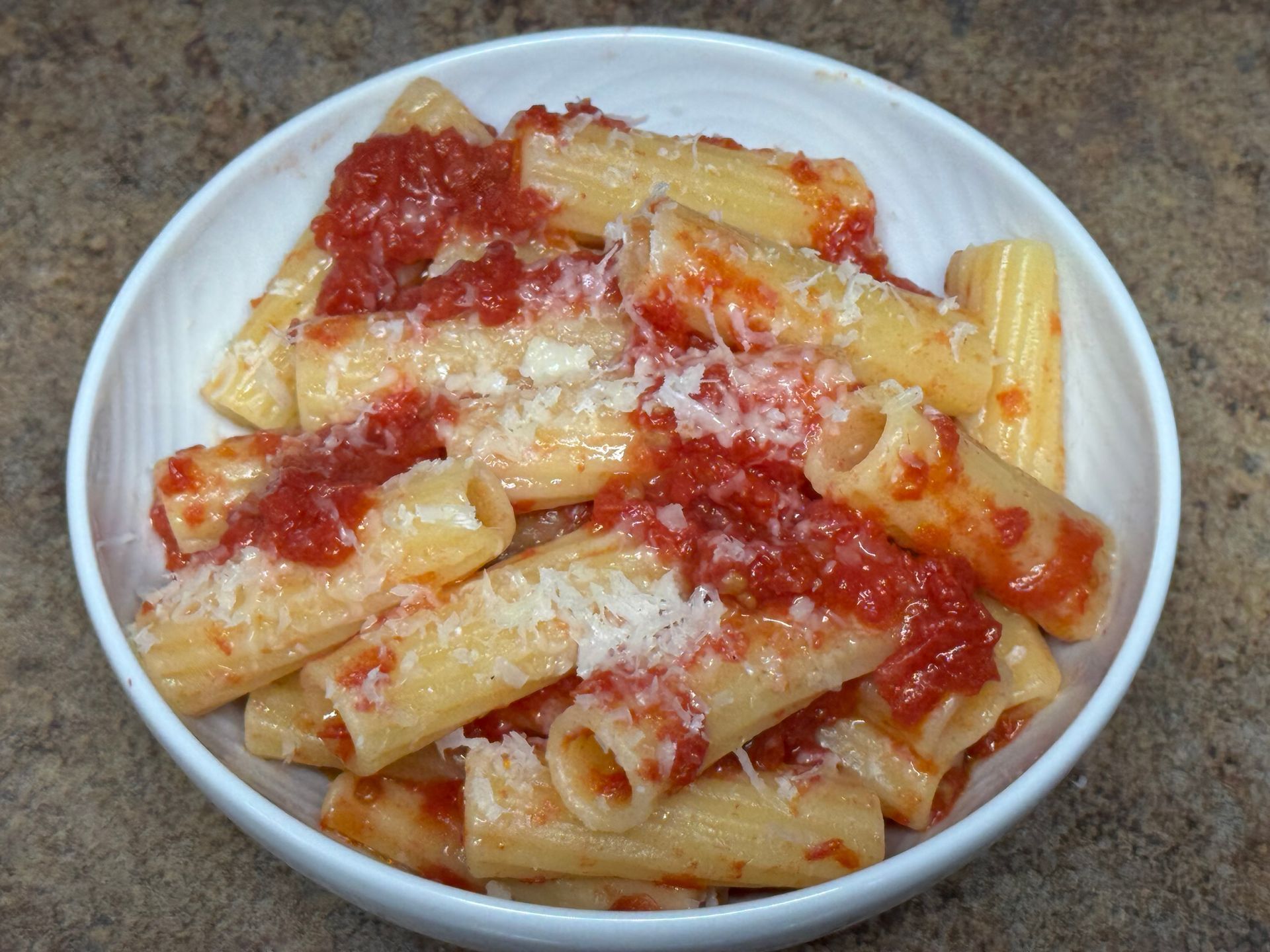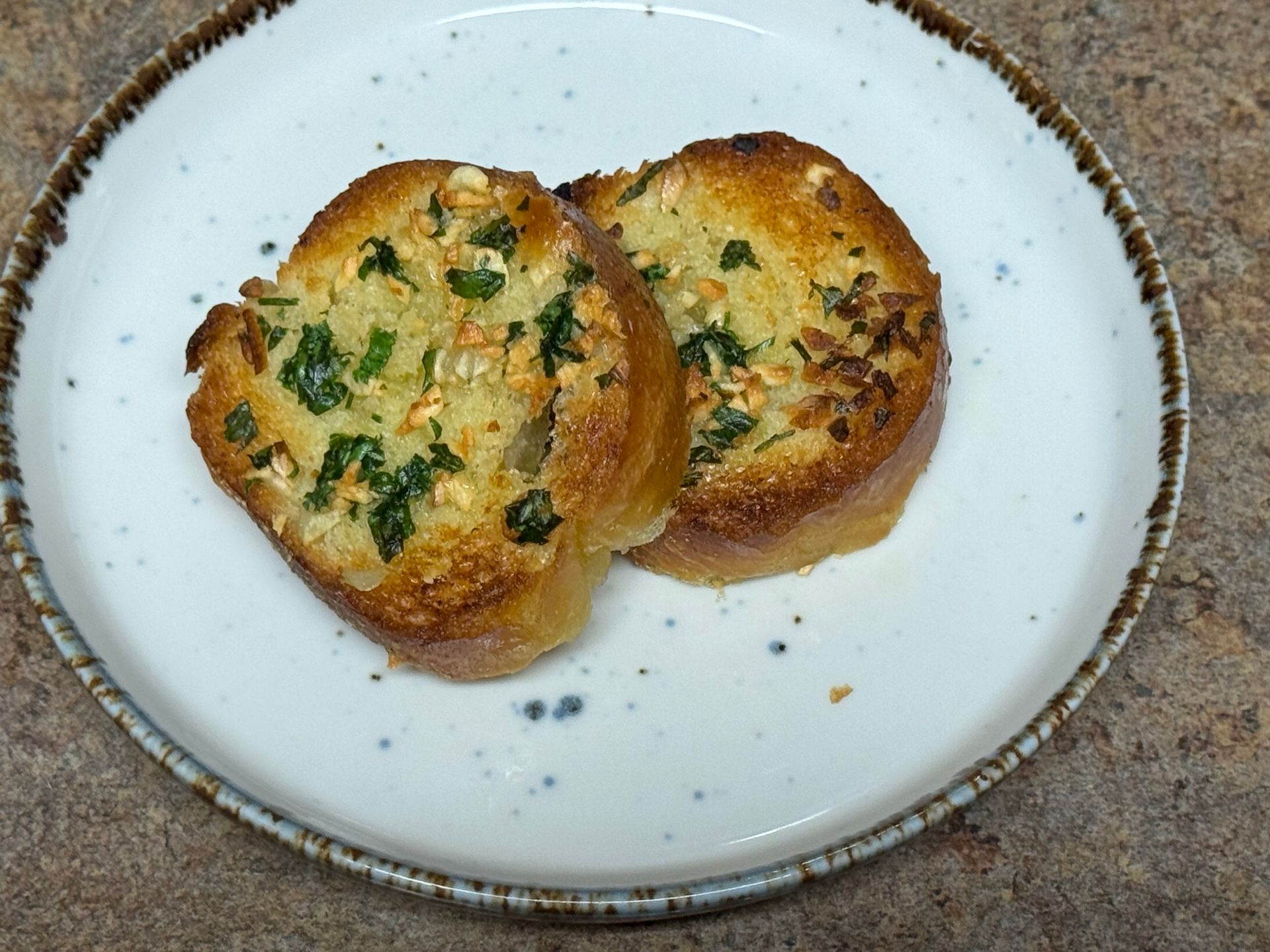
Apparently eggs are a main source of protein in the Calabrian village where my mother's family was from so eggs were used in many recipes. When my mother made this meatloaf recipe the center had a row of hard boiled eggs & the yolks were always green (overcooked) providing a delicious, childhood memory for me. I cook my eggs a little less these days.
My Mom's Italian Meatloaf
Growing up, we primarily ate the cuisine of Calabria, a poor region of southern Italy... peasant food- but I remember everything being delicious.
Most meals had a typical, Italian style salad-for us that was iceberg lettuce with red wine vinegar & olive oil, tomatoes, red onions, olives, cucumbers.
We always had pasta, then lots of vegetables with the main course. I don't remember eating too many meat entrees but my mother's meatloaf is probably my absolute favorite.
Meatloaf
Prep Time: 30 min
Cooking Time: 40 min
Yield: 4 portions
Ingredients
3 oz. Olive oil
1/2 Cup. Spanish onion, chopped
3 cloves Garlic, peeled
1/2 tsp Kosher Salt
t.t. Black pepper
1/4 Cup. Breadcrumbs (I like Progresso Italian style)
2 ea Eggs
3 Tbsp. Tomato paste
2 lbs Meatloaf blend (ground beef, veal, pork)
1/4 Cup. Parmesan cheese, grated
3 ea Hard boiled, peeled (only simmered for 8 minutes)
How to Prepare Meatloaf

Step 1
Heat the olive oil in a pan, add the onions and garlic and cook until tender, about 4 minutes; cool.
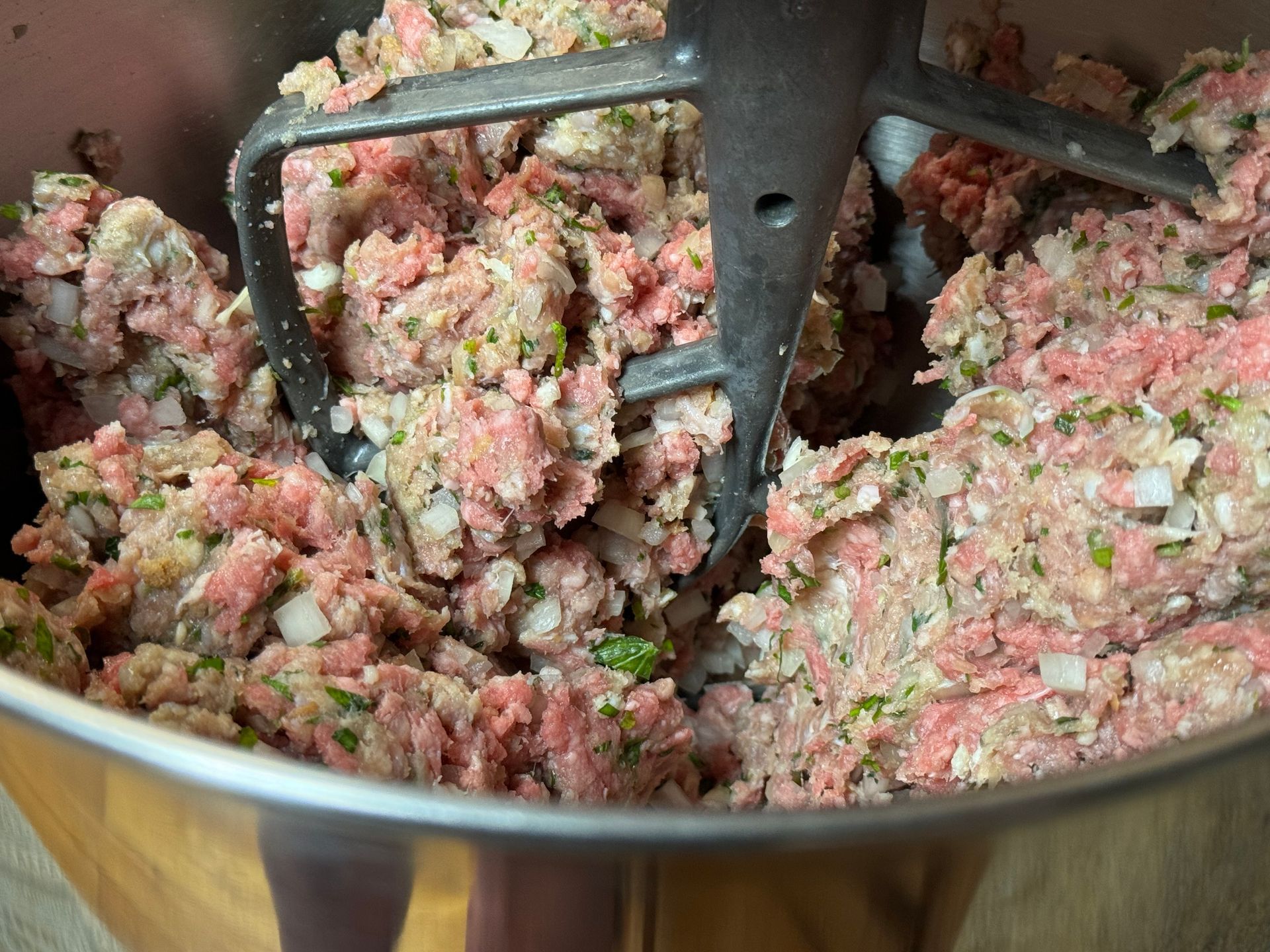
Step 2
Put the ingredients (not the hard boiled eggs) into a mixing bowl, mix until incorporated. Take one spoonful & fry it in oil to taste. Add more seasoning if desired. Place the meatloaf mixture onto a sheetpan lined with parchment, forming a loaf. Make an indentation in the center, the long way to fit the hard boiled eggs into the middle of the meatloaf, place the eggs in the center in a row lengthwise (don't break the eggs), smooth the meatloaf mixture back over the eggs to form the loaf.
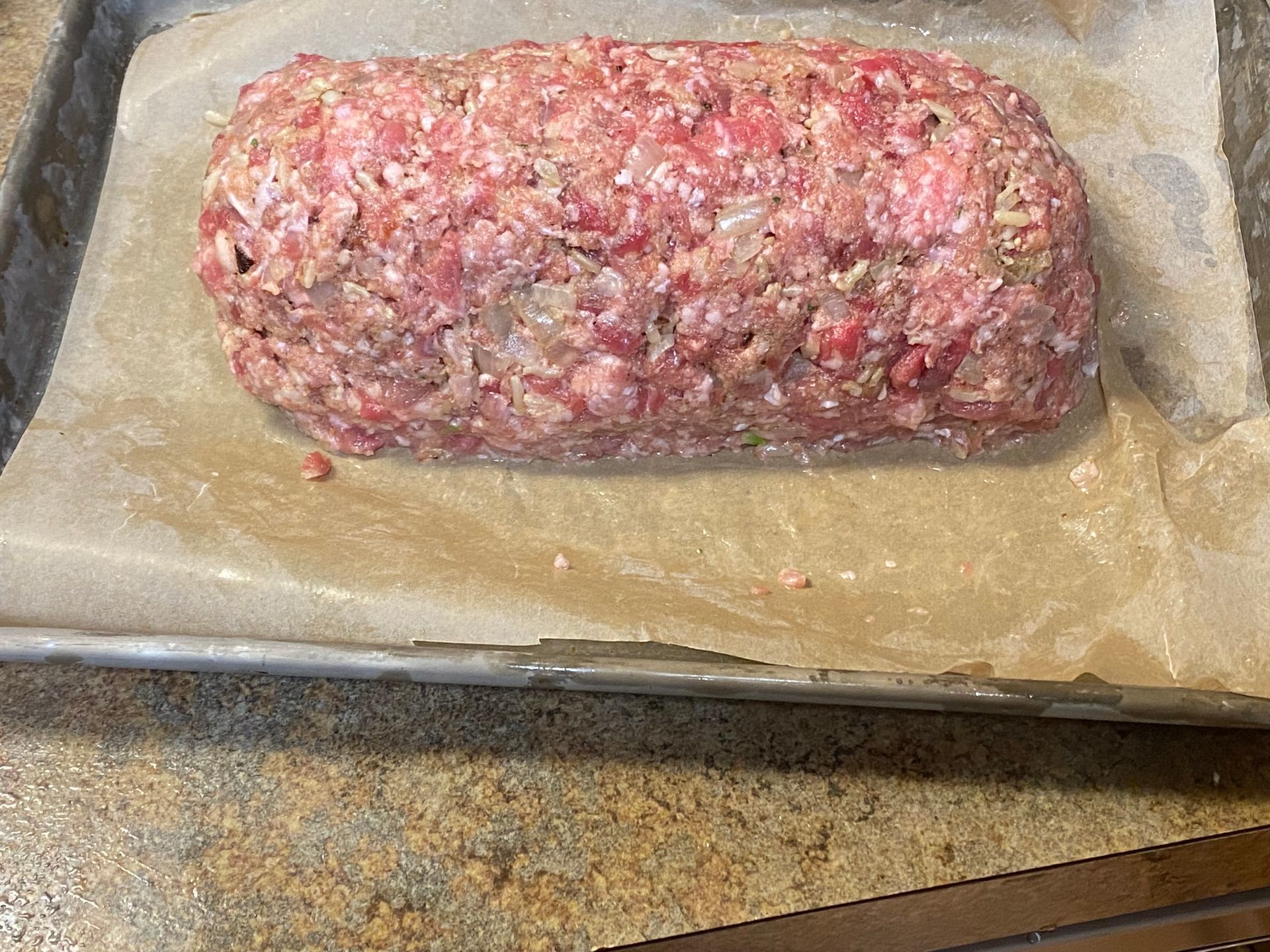
Step 3
Place the meatloaf into a preheated oven (350° F) and bake until internal temperature of 165° F. Take the meatloaf out and rest for 20 minutes before eating.
